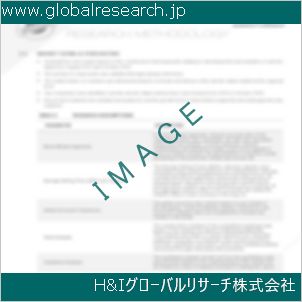Table of Contents
1 Industry Overview of 2-Ethylbutanol
1.1 Definition and Specifications of 2-Ethylbutanol
1.1.1 Definition of 2-Ethylbutanol
1.1.2 Specifications of 2-Ethylbutanol
1.2 Classification of 2-Ethylbutanol
1.3 Applications of 2-Ethylbutanol
1.3.1 Nuclear Application
1.3.2 Non-Nuclear Application
1.4 Industry Chain Structure of 2-Ethylbutanol
1.5 Industry Overview and Major Regions Status of 2-Ethylbutanol
1.5.1 Industry Overview of 2-Ethylbutanol
1.5.2 Global Major Regions Status of 2-Ethylbutanol
1.6 Industry Policy Analysis of 2-Ethylbutanol
1.7 Industry News Analysis of 2-Ethylbutanol
2 Manufacturing Cost Structure Analysis of 2-Ethylbutanol
2.1 Raw Material Suppliers and Price Analysis of 2-Ethylbutanol
2.2 Equipment Suppliers and Price Analysis of 2-Ethylbutanol
2.3 Labor Cost Analysis of 2-Ethylbutanol
2.4 Other Costs Analysis of 2-Ethylbutanol
2.5 Manufacturing Cost Structure Analysis of 2-Ethylbutanol
2.6 Manufacturing Process Analysis of 2-Ethylbutanol
3 Technical Data and Manufacturing Plants Analysis of 2-Ethylbutanol
3.1 Capacity and Commercial Production Date of Global 2-Ethylbutanol Major Manufacturers in 2023
3.2 Manufacturing Plants Distribution of Global 2-Ethylbutanol Major Manufacturers in 2023
3.3 R&D Status and Technology Source of Global 2-Ethylbutanol Major Manufacturers in 2023
3.4 Raw Materials Sources Analysis of Global 2-Ethylbutanol Major Manufacturers in 2023
4 Capacity, Production and Revenue Analysis of 2-Ethylbutanol by Regions, Types and Manufacturers
4.1 Global Capacity, Production and Revenue of 2-Ethylbutanol by Regions 2019-2024
4.2 Global and Major Regions Capacity, Production, Revenue and Growth Rate of 2-Ethylbutanol 2019-2024
4.3 Global Capacity, Production and Revenue of 2-Ethylbutanol by Types 2019-2024
4.4 Global Capacity, Production and Revenue of 2-Ethylbutanol by Manufacturers 2019-2024
5 Price, Cost, Gross and Gross Margin Analysis of 2-Ethylbutanol by Regions, Types and Manufacturers
5.1 Price, Cost, Gross and Gross Margin Analysis of 2-Ethylbutanol by Regions 2019-2024
5.2 Price, Cost, Gross and Gross Margin Analysis of 2-Ethylbutanol by Types 2019-2024
5.3 Price, Cost, Gross and Gross Margin Analysis of 2-Ethylbutanol by Manufacturers 2019-2024
6 Consumption Volume, Consumption Value and Sale Price Analysis of 2-Ethylbutanol by Regions, Types and Applications
6.1 Global Consumption Volume and Consumption Value of 2-Ethylbutanol by Regions 2019-2024
6.2 Global and Major Regions Consumption Volume, Consumption Value and Growth Rate of 2-Ethylbutanol 2019-2024
6.3 Global Consumption Volume and Consumption Value of 2-Ethylbutanol by Types 2019-2024
6.4 Global Consumption Volume and Consumption Value of 2-Ethylbutanol by Applications 2019-2024
6.5 Sale Price of 2-Ethylbutanol by Regions 2019-2024
6.6 Sale Price of 2-Ethylbutanol by Types 2019-2024
6.7 Sale Price of 2-Ethylbutanol by Applications 2019-2024
6.8 Market Share Analysis of 2-Ethylbutanol by Different Sale Price Levels
7 Supply, Import, Export and Consumption Analysis of 2-Ethylbutanol
7.1 Supply, Consumption and Gap of 2-Ethylbutanol 2019-2024
7.2 Global Capacity, Production, Price, Cost, Revenue, Supply, Import, Export and Consumption of 2-Ethylbutanol 2019-2024
7.3 USA Capacity, Production, Price, Cost, Revenue, Supply, Import, Export and Consumption of 2-Ethylbutanol 2019-2024
7.4 EU Capacity, Production, Price, Cost, Revenue, Supply, Import, Export and Consumption of 2-Ethylbutanol 2019-2024
7.5 China Capacity, Production, Price, Cost, Revenue, Supply, Import, Export and Consumption of 2-Ethylbutanol 2019-2024
7.6 Japan Capacity, Production, Price, Cost, Revenue, Supply, Import, Export and Consumption of 2-Ethylbutanol 2019-2024
8 Major Manufacturers Analysis of 2-Ethylbutanol
8.1 Manufacturer One
8.1.1 Company Profile
8.1.2 Product Picture and Specifications
8.1.2.1 Type I
8.1.2.2 Type II
8.1.2.3 Type III
8.1.3 Capacity, Production, Price, Cost, Gross and Revenue
8.1.4 Contact Information
8.2 Manufacturer Two
8.2.1 Company Profile
8.2.2 Product Picture and Specifications
8.2.2.1 Type I
8.2.2.2 Type II
8.2.2.3 Type III
8.2.3 Capacity, Production, Price, Cost, Gross and Revenue
8.2.4 Contact Information
8.3 Manufacturer Three
8.3.1 Company Profile
8.3.2 Product Picture and Specifications
8.3.2.1 Type I
8.3.2.2 Type II
8.3.2.3 Type III
8.3.3 Capacity, Production, Price, Cost, Gross and Revenue
8.3.4 Contact Information
8.4 Manufacturer Four
8.4.1 Company Profile
8.4.2 Product Picture and Specifications
8.4.2.1 Type I
8.4.2.2 Type II
8.4.2.3 Type III
8.4.3 Capacity, Production, Price, Cost, Gross and Revenue
8.4.4 Contact Information
8.5 Manufacturer Five
8.5.1 Company Profile
8.5.2 Product Picture and Specifications
8.5.2.1 Type I
8.5.2.2 Type II
8.5.2.3 Type III
8.5.3 Capacity, Production, Price, Cost, Gross and Revenue
8.5.4 Contact Information
…
9 Marketing Trader or Distributor Analysis of 2-Ethylbutanol
9.1 Marketing Channels Status of 2-Ethylbutanol
9.2 Traders or Distributors with Contact Information of 2-Ethylbutanol by Regions
9.3 Ex-work Price, Channel Price and End Buyer Price Analysis of 2-Ethylbutanol
9.4 Regional Import, Export and Trade Analysis of 2-Ethylbutanol
10 Industry Chain Analysis of 2-Ethylbutanol
10.1 Upstream Major Raw Materials Suppliers Analysis of 2-Ethylbutanol
10.1.1 Major Raw Materials Suppliers with Contact Information Analysis of 2-Ethylbutanol
10.1.2 Major Raw Materials Suppliers with Supply Volume Analysis of 2-Ethylbutanol by Regions
10.2 Upstream Major Equipment Suppliers Analysis of 2-Ethylbutanol
10.2.1 Major Equipment Suppliers with Contact Information Analysis of 2-Ethylbutanol
10.2.2 Major Equipment Suppliers with Product Pictures Analysis of 2-Ethylbutanol by Regions
10.3 Downstream Major Consumers Analysis of 2-Ethylbutanol
10.3.1 Major Consumers with Contact Information Analysis of 2-Ethylbutanol
10.3.2 Major Consumers with Consumption Volume Analysis of 2-Ethylbutanol by Regions
10.4 Supply Chain Relationship Analysis of 2-Ethylbutanol
11 Development Trend of Analysis of 2-Ethylbutanol
11.1 Capacity, Production and Revenue Forecast of 2-Ethylbutanol by Regions and Types
11.1.1 Global Capacity, Production and Revenue of 2-Ethylbutanol by Regions 2024-2029
11.1.2 Global and Major Regions Capacity, Production, Revenue and Growth Rate of 2-Ethylbutanol 2024-2029
11.1.3 Global Capacity, Production and Revenue of 2-Ethylbutanol by Types 2024-2029
11.2 Consumption Volume and Consumption Value Forecast of 2-Ethylbutanol by Regions, Types and Applications
11.2.1 Global Consumption Volume and Consumption Value of 2-Ethylbutanol by Regions 2024-2029
11.2.2 Global and Major Regions Consumption Volume, Consumption Value and Growth Rate of 2-Ethylbutanol 2024-2029
11.2.3 Global Consumption Volume and Consumption Value of 2-Ethylbutanol by Types 2024-2029
11.2.4 Global Consumption Volume and Consumption Value of 2-Ethylbutanol by Applications 2024-2029
11.3 Supply, Import, Export and Consumption Forecast of 2-Ethylbutanol
11.3.1 Supply, Consumption and Gap of 2-Ethylbutanol 2024-2029
11.3.2 Global Capacity, Production, Price, Cost, Revenue, Supply, Import, Export and Consumption of 2-Ethylbutanol 2024-2029
11.3.3 USA Capacity, Production, Price, Cost, Revenue, Supply, Import, Export and Consumption of 2-Ethylbutanol 2024-2029
11.3.4 EU Capacity, Production, Price, Cost, Revenue, Supply, Import, Export and Consumption of 2-Ethylbutanol 2024-2029
11.3.5 China Capacity, Production, Price, Cost, Revenue, Supply, Import, Export and Consumption of 2-Ethylbutanol 2024-2029
11.3.6 Japan Capacity, Production, Price, Cost, Revenue, Supply, Import, Export and Consumption of 2-Ethylbutanol 2024-2029
12 New Project Investment Feasibility Analysis of 2-Ethylbutanol
12.1 New Project SWOT Analysis of 2-Ethylbutanol
12.2 New Project Investment Feasibility Analysis of 2-Ethylbutanol
13 Conclusion of the Global 2-Ethylbutanol (CAS 97-95-0) Industry 2024 Market Research Report
| ※参考情報 2-エチルブタノールは、化学式 C₆H₁₄O を持つ有機化合物です。この化合物は、アルコール類に分類され、特に直鎖アルカンの一種であるブタノールの誘導体として位置づけられます。CAS番号は 97-95-0 で、一般的に化学合成や工業プロセスにおいて重要な役割を果たしています。 2-エチルブタノールの定義は、炭素骨格が4つの炭素原子から構成されたブタン系列にエチル基が付加された構造を持つことから、存在意義が生まれます。分子内にはヒドroxyl基が含まれており、このため耐水性および親水性の性質を有しています。その特徴の一つは、液体の状態であることです。常温常圧では無色透明で、特有の香りを持ち、揮発性があります。 2-エチルブタノールにはいくつかの特性があります。例えば、沸点は約 138℃ で、融点は -80℃ です。この広い温度範囲での安定性は、さまざまな条件下でも利用される理由といえます。さらに、比重は水より大きく、約 0.81 で、これにより水に対する不溶性を示します。また、極性があるため、一般的な有機溶媒と混和しやすく、多くの化合物と含まれるため、反応性も高いと評価されています。 2-エチルブタノールは、その特性からさまざまな用途があります。特に、溶剤や中間体として化学工業で広く使用されています。また、ワニスや塗料の製造においても重要な成分とされています。特に塗装業界では、乾燥時間を短縮するために添加剤として役立つことが多いです。このような用途に加え、香料や香粧品の製造においても使用されるため、幅広い分野での需要があります。 そのほか、農薬や薬品の合成にも用いられています。特に、農業においては、農薬の有効成分を合成する際の中間体として機能することが多いです。また、薬品の合成においても、医薬品の製造プロセスにおいて、この化合物が必要とされるケースがあります。 関連技術としては、2-エチルブタノールの合成方法が挙げられます。主な合成ルートは、ブチレンとエタノールを反応させることで得られる方法です。また、酢酸菌からの発酵過程を利用する生物的なアプローチも研究されています。これにより、より環境に優しい手法での製造が実現される可能性があります。 さらに、2-エチルブタノールは、今後の化学工業の持続可能な発展に関する研究の一環として、高効率な合成プロセスやその応用技術においても注目されています。バイオマスを起源とする原料からの合成も含め、エコロジカルな観点からも研究が進められています。 安全性に関しても十分な注意が必要です。2-エチルブタノールは、皮膚や目に対する刺激性があり、吸入した場合は呼吸器に対する影響を及ぼす可能性があります。また、引火性があるため、取り扱いには注意が必要です。各国の規制に従った適切な管理が求められます。 最後に、2-エチルブタノールは、さまざまな産業分野での多用途性を持ちながらも、その安全性や環境影響についての研究が進められている魅力的な化合物であると言えます。今後も、持続可能な方法での利用が進むことで、さらなる発展が期待されます。 |
❖ 免責事項 ❖
http://www.globalresearch.jp/disclaimer


-gr.jpg)









